Andrea E. Martin
From Language to Language-ish: How Brain-Like is an LSTM's Representation of Nonsensical Language Stimuli?
Oct 14, 2020



Abstract:The representations generated by many models of language (word embeddings, recurrent neural networks and transformers) correlate to brain activity recorded while people read. However, these decoding results are usually based on the brain's reaction to syntactically and semantically sound language stimuli. In this study, we asked: how does an LSTM (long short term memory) language model, trained (by and large) on semantically and syntactically intact language, represent a language sample with degraded semantic or syntactic information? Does the LSTM representation still resemble the brain's reaction? We found that, even for some kinds of nonsensical language, there is a statistically significant relationship between the brain's activity and the representations of an LSTM. This indicates that, at least in some instances, LSTMs and the human brain handle nonsensical data similarly.
Relation learning in a neurocomputational architecture supports cross-domain transfer
Oct 11, 2019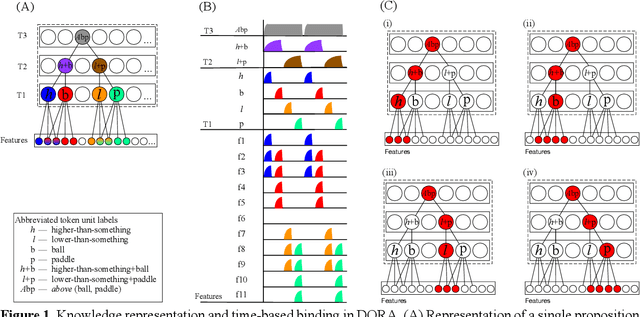
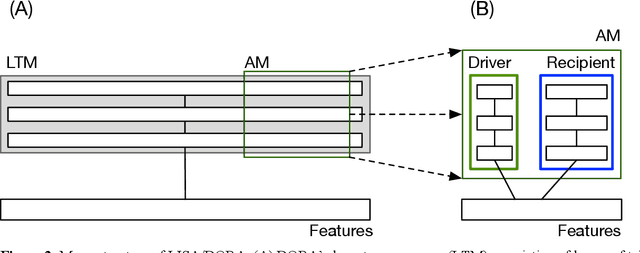


Abstract:People readily generalise prior knowledge to novel situations and stimuli. Advances in machine learning and artificial intelligence have begun to approximate and even surpass human performance in specific domains, but machine learning systems struggle to generalise information to untrained situations. We present and model that demonstrates human-like extrapolatory generalisation by learning and explicitly representing an open-ended set of relations characterising regularities within the domains it is exposed to. First, when trained to play one video game (e.g., Breakout). the model generalises to a new game (e.g., Pong) with different rules, dimensions, and characteristics in a single shot. Second, the model can learn representations from a different domain (e.g., 3D shape images) that support learning a video game and generalising to a new game in one shot. By exploiting well-established principles from cognitive psychology and neuroscience, the model learns structured representations without feedback, and without requiring knowledge of the relevant relations to be given a priori. We present additional simulations showing that the representations that the model learns support cross-domain generalisation. The model's ability to generalise between different games demonstrates the flexible generalisation afforded by a capacity to learn not only statistical relations, but also other relations that are useful for characterising the domain to be learned. In turn, this kind of flexible, relational generalisation is only possible because the model is capable of representing relations explicitly, a capacity that is notably absent in extant statistical machine learning algorithms.
The relational processing limits of classic and contemporary neural network models of language processing
May 12, 2019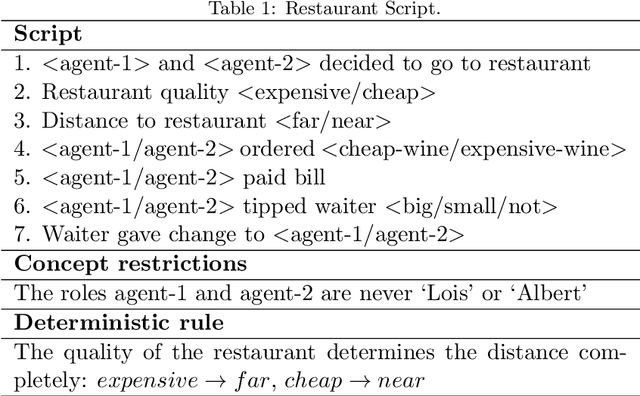
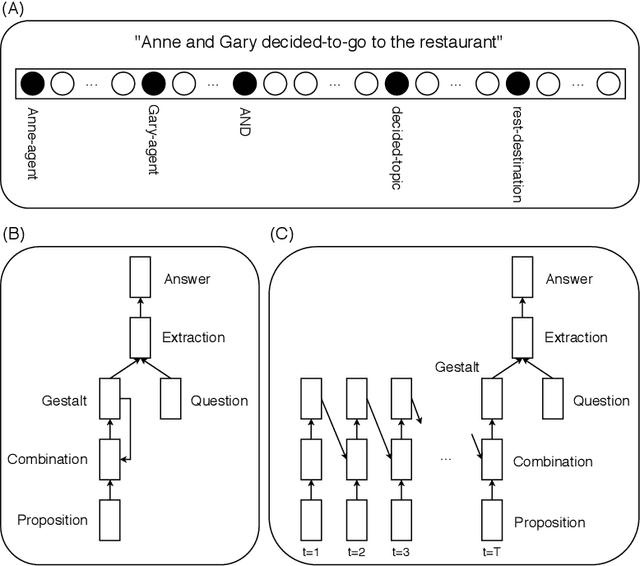

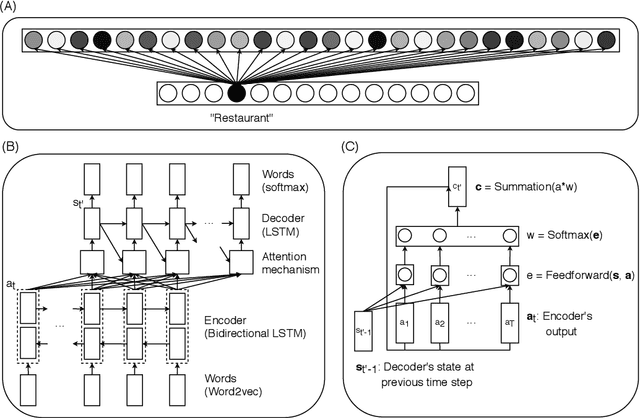
Abstract:The ability of neural networks to capture relational knowledge is a matter of long-standing controversy. Recently, some researchers in the PDP side of the debate have argued that (1) classic PDP models can handle relational structure (Rogers & McClelland, 2008, 2014) and (2) the success of deep learning approaches to text processing suggests that structured representations are unnecessary to capture the gist of human language (Rabovsky et al., 2018). In the present study we tested the Story Gestalt model (St. John, 1992), a classic PDP model of text comprehension, and a Sequence-to-Sequence with Attention model (Bahdanau et al., 2015), a contemporary deep learning architecture for text processing. Both models were trained to answer questions about stories based on the thematic roles that several concepts played on the stories. In three critical test we varied the statistical structure of new stories while keeping their relational structure constant with respect to the training data. Each model was susceptible to each statistical structure manipulation to a different degree, with their performance failing below chance at least under one manipulation. We argue that the failures of both models are due to the fact that they cannotperform dynamic binding of independent roles and fillers. Ultimately, these results cast doubts onthe suitability of traditional neural networks models for explaining phenomena based on relational reasoning, including language processing.
Predicate learning in neural systems: Discovering latent generative structures
Oct 02, 2018Abstract:Humans learn complex latent structures from their environments (e.g., natural language, mathematics, music, social hierarchies). In cognitive science and cognitive neuroscience, models that infer higher-order structures from sensory or first-order representations have been proposed to account for the complexity and flexibility of human behavior. But how do the structures that these models invoke arise in neural systems in the first place? To answer this question, we explain how a system can learn latent representational structures (i.e., predicates) from experience with wholly unstructured data. During the process of predicate learning, an artificial neural network exploits the naturally occurring dynamic properties of distributed computing across neuronal assemblies in order to learn predicates, but also to combine them compositionally, two computational aspects which appear to be necessary for human behavior as per formal theories in multiple domains. We describe how predicates can be combined generatively using neural oscillations to achieve human-like extrapolation and compositionality in an artificial neural network. The ability to learn predicates from experience, to represent structures compositionally, and to extrapolate to unseen data offers an inroads to understanding and modeling the most complex human behaviors.
Human-like generalization in a machine through predicate learning
Jun 06, 2018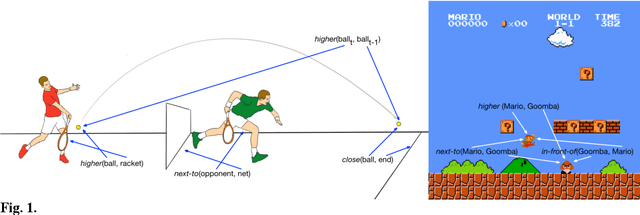
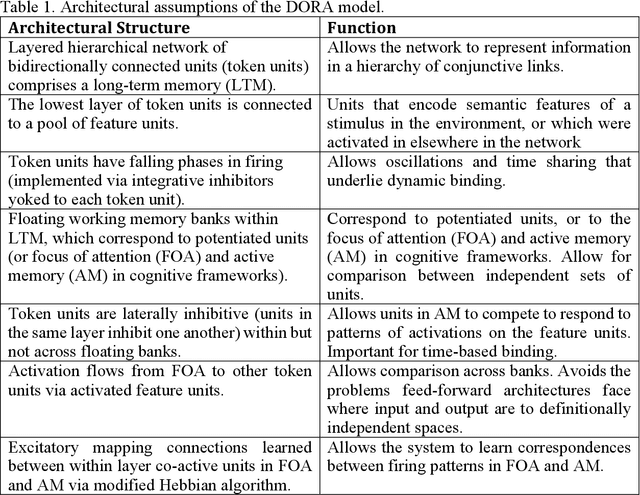
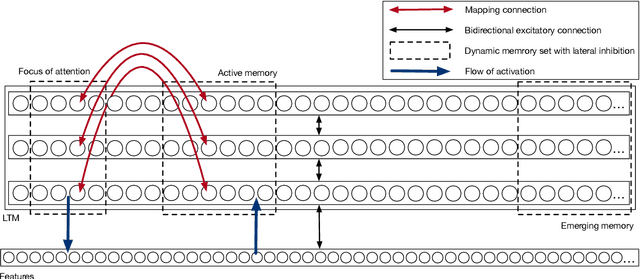
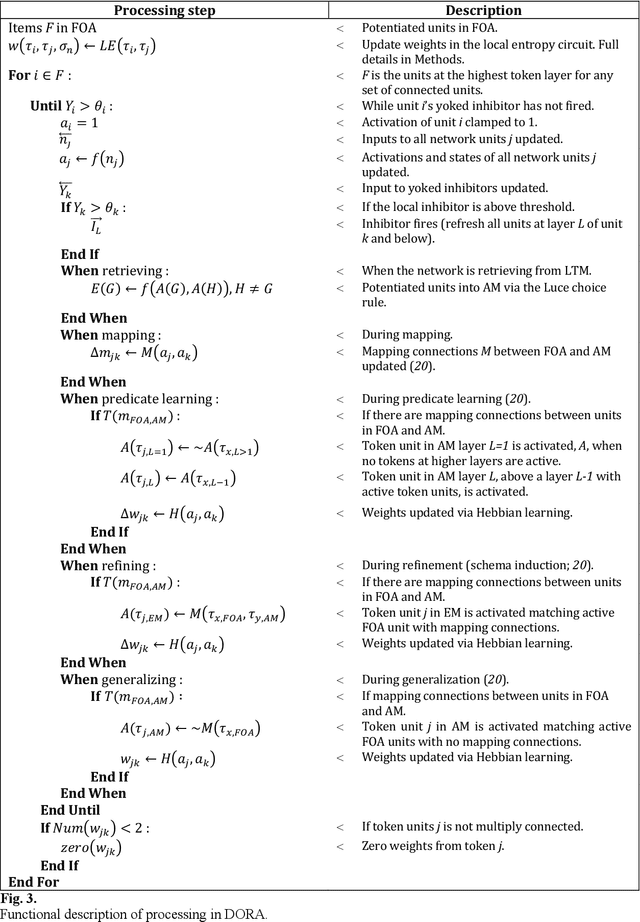
Abstract:Humans readily generalize, applying prior knowledge to novel situations and stimuli. Advances in machine learning and artificial intelligence have begun to approximate and even surpass human performance, but machine systems reliably struggle to generalize information to untrained situations. We describe a neural network model that is trained to play one video game (Breakout) and demonstrates one-shot generalization to a new game (Pong). The model generalizes by learning representations that are functionally and formally symbolic from training data, without feedback, and without requiring that structured representations be specified a priori. The model uses unsupervised comparison to discover which characteristics of the input are invariant, and to learn relational predicates; it then applies these predicates to arguments in a symbolic fashion, using oscillatory regularities in network firing to dynamically bind predicates to arguments. We argue that models of human cognition must account for far- reaching and flexible generalization, and that in order to do so, models must be able to discover symbolic representations from unstructured data, a process we call predicate learning. Only then can models begin to adequately explain where human-like representations come from, why human cognition is the way it is, and why it continues to differ from machine intelligence in crucial ways.
 Add to Chrome
Add to Chrome Add to Firefox
Add to Firefox Add to Edge
Add to Edge